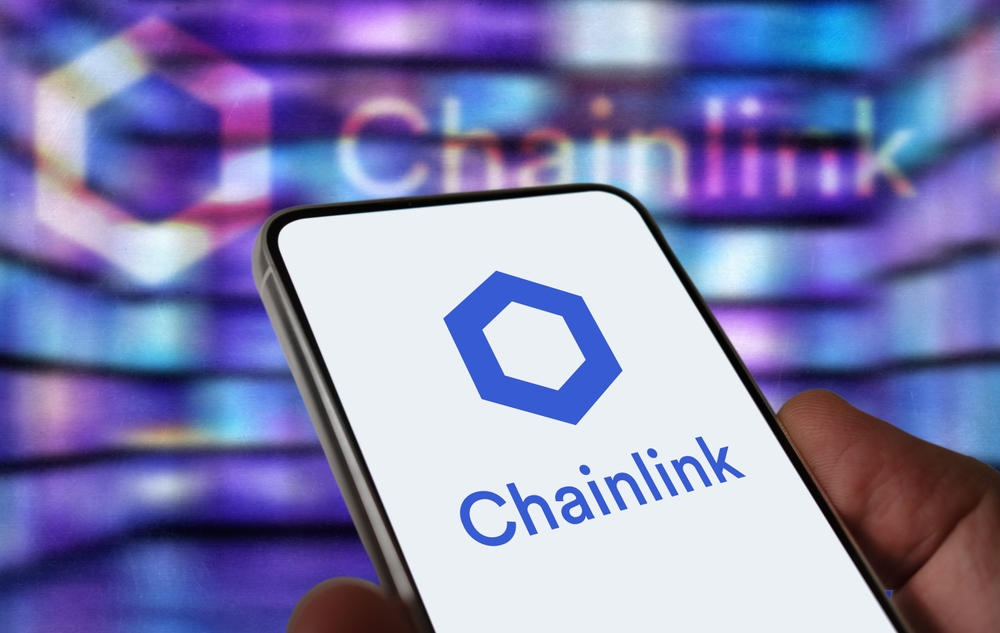Understanding the Role of Oracles in DeFi

How does a DeFi app know the exact price of ETH right now? If smart contracts can’t natively see the outside world, what tells them when to liquidate, issue loans, or settle trades? That silent middle layer is the oracle—usually invisible, absolutely critical, and the difference between a smooth day and a painful liquidation.
I’ve reviewed a lot of crypto tools across bull and bear cycles. Oracles are the quiet MVPs behind lending markets, stablecoins, perps, and almost every “it just works” moment you take for granted. Understanding them will make you a smarter user and a better builder.
Describe problems or pain
When oracles fail, people get rekt. It’s not hypothetical—we have receipts:
- Price manipulation via thin venues: Attackers have pushed prices on low‑liquidity markets to distort on‑chain feeds, then borrowed against inflated collateral. The Mango Markets incident (2022) is a textbook example: an orchestrated price move led to ~$100M+ drained.
- Single‑source fragility: A bad API or bug can nuke trust. In 2019, a Synthetix KRW feed glitch briefly priced at 1,000×, triggering massive arbitrage until halted (post‑mortem).
- Stale data during volatility: Congestion and reorgs can freeze updates right when markets move fastest. On “Black Thursday” 2020, Maker’s ecosystem saw chaos as gas spiked and pricing/auctions lagged, leading to bad debt (post‑mortem).
- Wrong ticks, real consequences: In 2021, a Pyth price incident reported outlier BTC prices on Solana during network stress, causing unexpected liquidations until issues were corrected.
When an oracle hiccups, you get wrongful liquidations, mispriced swaps, and protocol halts. Flash‑loan swings, stale feeds, and “just one API” setups are traps—especially if you don’t know how your app’s oracle actually works. That’s trusting blind.
Promise solution
I’m going to make oracles simple. No fluff—just what matters to protect funds and ship reliable products. We’ll look at:
- What an oracle is (in plain English)
- How real‑world data is fetched, verified, and published on‑chain
- The main oracle designs you’ll actually encounter—and where each shines
- Where oracles matter most in DeFi (lending, stables, perps, more)
- Common attack patterns and practical defenses
- A short checklist to pick the right oracle for your app
Who this guide is for
- DeFi users who want fewer liquidation surprises and safer collateral choices
- Founders and engineers building lending, perps, stablecoins, or RWA products
- Analysts and risk teams who need to judge oracle risk quickly and consistently
What you’ll take away
- A clear mental model for how oracles actually work
- Red flags that signal “don’t trust this feed”
- Best practices that reduce risk without killing UX
- A buyer’s guide you can use today to compare providers
Oracles are the trust layer of DeFi. When they’re strong, protocols feel boring—in the best way. When they’re weak, everything breaks at once.
So what is a DeFi oracle, in plain English—and why can’t a blockchain just look up a price itself? Let’s answer that next.
What is a DeFi oracle, in plain English

The bridge
Think of a DeFi oracle as the bridge between smart contracts and the real world. Blockchains are great at running code exactly as written, but they can’t look up today’s ETH price, a USD/EUR rate, or whether it rained in Chicago. Oracles bring that external truth on-chain so apps can act on it.
In practice, an oracle can feed in lots of things:
- Market prices: ETH/USD, BTC/ETH, gold, treasury yields.
- Financing data: funding rates, interest rate indices, CPI prints.
- Event results: sports scores, election outcomes, weather totals for parametric insurance.
- Proofs and attestations: “This wallet passed KYC,” “These assets exist off-chain,” “This message came from chain X.”
“A smart contract is only as trustworthy as the data it consumes.”
That’s why oracles matter. In the split second a lending protocol checks your collateral or a perps venue settles your PnL, the oracle’s answer decides what happens to your money.
Why blockchains need them
Blockchains are closed systems by design. Nodes must all reach the same result from the same inputs, or consensus breaks. That’s why contracts don’t make HTTP calls or scrape exchanges directly—doing so would be inconsistent and unsafe.
Oracles solve this with a predictable path: collect external data, agree on a value off-chain or via crypto proofs, then publish a single, verifiable number on-chain for contracts to use. No guesswork, no hidden APIs inside the contract.
If you want a quick mental model: the chain is the calculator; the oracle is the data entry. Get the input wrong, and even the best calculator gives the wrong answer.
Types of data DeFi cares about
Here’s the short list I see most often in real protocols, plus where it tends to show up:
- Spot price feeds: Core for lending, stablecoins, and derivatives. See Chainlink price feeds as a common example.
- TWAPs (time‑weighted average prices): Smooth out noise and flash spikes; Uniswap v3’s built-in oracle popularized this in AMMs.
- Funding rates: Perpetuals use these to keep prices in line with spot markets.
- Volatility surfaces / IV: Options protocols need implied vol and sometimes realized vol to price and settle.
- Collateral ratios and baskets: Stablecoins and index protocols track multiple assets, sometimes with weights and buffers.
- FX rates: Multi-collateral stablecoins and RWA platforms need fiat conversions (USD/EUR/JPY) and sometimes emerging market pairs.
- RWA valuations and attestations: Treasury bills, invoices, or real estate bring in auditor attestations or NAV updates.
- Macro and economic indices: CPI, PCE, or on-chain rate indices for interest-bearing assets.
Industry docs and research consistently underline these needs: Uniswap’s oracle docs explain TWAP safety trade-offs, Maker’s oracle module outlines price selection and delay parameters for collateral, and low-latency networks document how they handle fast markets (Uniswap v3, Maker Oracles, Pyth Network).
Where you see them every day
You’ve probably used an oracle today without realizing it. A few real touchpoints:
- Lending liquidations: When collateral health is checked on Aave or similar protocols, a price feed decides if a loan is safe or needs liquidation.
- Stablecoin pegs: Collateral valuations and redemption windows reference price and FX oracles—critical for systems that hold ETH, BTC, or treasuries to back a dollar-pegged token.
- Perps and options: Settlement, index prices, and funding calculations read low-latency feeds from multiple exchanges to keep positions fair during volatility.
- AMMs with safeguards: Some AMMs use on-chain TWAP oracles as a sanity check against external feeds, reducing manipulation risk during thin liquidity.
- Cross‑chain messaging: When an app on Chain A needs data or commands from Chain B, an oracle-like messaging layer passes authenticated information between them.
- RWA attestations: Tokenized treasury bills and credit markets ingest auditor reports and reference market rates to update NAV and yields on-chain.
If oracles are the bridge, the natural next question is simple: how do they actually fetch, verify, and publish data without breaking security or blowing up gas costs? Let’s unpack that next—what gets pulled, who signs off, and how a single number shows up on-chain when the market is moving fast.
How oracles fetch and verify real‑world data

Data retrieval
When you see a “price feed” on-chain, you’re looking at the end of a long, messy pipeline. Behind the scenes, oracle nodes are constantly pulling quotes from multiple exchanges and institutional APIs, scrubbing the noise, then translating that data into a format smart contracts can safely use.
Here’s what actually happens before a single number hits your protocol:
- Multi-exchange pulls: Nodes collect bids/asks and trades from top venues (think Coinbase, Kraken, Binance, Bitstamp) and reputable data providers (Kaiko, ICE/Refinitiv, CF Benchmarks). WebSockets provide low-latency streams; REST fills gaps and backfills.
- Normalization: Everything is converted to consistent units, decimals, and quote currencies, with ticker mappings solved (ETHUSD vs ETH/USDT vs WETH/USD). Fiat FX and stablecoin pegs get applied so USDT or EUR quotes become apples-to-apples in USD if needed.
- Cleaning and outlier control: Spikes from thin books or broken APIs get filtered using robust stats such as median absolute deviation (MAD), Hampel filters, z-scores, liquidity-weighted caps, and exchange health checks.
- Microstructure logic: For some assets, trades are weighted by volume or book depth (VWAP), and time windows like TWAP are used to reduce the chance that one rogue tick swings the feed.
Real example you may remember: in September 2021, a publisher error caused a wildly incorrect BTC price on Solana’s Pyth network that printed in the thousands of dollars on some apps. That incident (publicly documented by Pyth and covered by major outlets) pushed the ecosystem to harden publisher sets, add better sanity checks, and introduce stricter confidence intervals. It was an uncomfortable reminder that “just one bad source” can ripple across DeFi—unless your retrieval and cleaning layers are built to reject it.
“Trust is invisible—until it breaks.”
Verification and trust
After gathering data, oracles still need to answer the question: “Why should a smart contract believe this number?” Different systems combine statistical defenses with crypto guarantees to earn that trust.
- Multi-source aggregation: The gold standard is medianization across many independent sources. Some feeds use weighted medians based on liquidity or venue quality. This makes it extremely hard for a single exchange or API to move the on-chain value.
- Decentralized consensus: Networks like Chainlink use Off-Chain Reporting (OCR) where N out of M independent nodes sign a report, then a single on-chain transaction posts the aggregated value. Pyth uses a publisher set that signs prices off-chain and commits them on-chain. Either way, you get a quorum of signatures instead of trusting any single machine.
- Cryptographic signatures and provenance: Every report is signed. Consumers can verify who produced it and whether the payload was tampered with. This also creates an audit trail after incidents.
- Trusted execution environments (TEEs): Systems such as Intel SGX (pioneered for oracles by Town Crier from Cornell/IC3) let data be fetched and processed inside a secure enclave. The enclave attests that “these values came from this API over TLS, unaltered.” TEEs raise the bar, though they require careful handling of side-channel risks.
- Zero-knowledge attestations: ZK-powered approaches (for example, research and products inspired by DECO-style TLS proofs, or zkTLS frameworks from teams like Succinct) can prove a statement about an HTTPS response—without revealing the response itself. Think “prove this API said BTC = $X at time T,” verifiably and privately.
- Optimistic validation with challenges: Projects like UMA let anyone post a value bonded with collateral. There’s a challenge window; if someone disputes and wins, the poster gets slashed. This model is powerful for long-tail or less-frequent data where constant verification would be cost-prohibitive.
If you want to go deeper, the OCR engineering notes are a great read, and UMA’s Optimistic Oracle docs showcase how crypto-economic games can secure values that don’t need sub-second updates. For TEE history, the Town Crier paper remains a classic reference.
Delivery patterns
Even the best data is useless if it arrives late, too often (expensive), or not at all. Delivery design decides how a feed stays fresh without lighting gas on fire.
- Push vs pull:
- Push: Oracles proactively post updates to a canonical on-chain aggregator contract. Protocols just read it. This is simple and predictable for users.
- Pull: Protocols (or keepers) “pull” the latest signed price into their contract on demand, paying gas when they need it. This can slash costs across many markets but requires good UX and keeper infra. Pyth’s EVM model is a well-known example.
- Heartbeats: A heartbeat guarantees an update at a maximum interval even if the market is quiet, preventing staleness. On majors, that might be minutes; on thin assets, longer. Heartbeats are your safety net when deviations are small but time still passes.
- Deviation thresholds: If price moves more than X% (say 0.5–1%), push an update immediately. During volatility, this ramps up frequency; during calm, it saves gas. Many Chainlink feeds publish their deviation and heartbeat parameters publicly so risk teams can plan around them.
- Batched reports: Sign once, post many. Networks compress multiple market updates into one transaction (Merkle roots, packed reports) so costs drop and throughput rises. This is essential on L2s and busy L1s.
- On-chain finalization and read guards: Consumer contracts check freshness (lastUpdateTimestamp), maximum allowed staleness, and may require a minimum number of signatures. Some feeds include a confidence interval so protocols can size risk when markets are chaotic.
A quick mental model: heartbeats fight staleness, deviation thresholds fight surprises, and batching fights gas. You want all three tuned for your asset set and chain choice.
Liveness, latency, finality
In crypto, the clock is the enemy. Systems have to stay up, stay fast, and avoid committing to values that might be rolled back.
- Liveness: Redundant reporters, multiple RPC providers, cross-region infra, and failover routes keep feeds updating even during outages. On rollups, many protocols also watch a sequencer-uptime feed so they can pause sensitive actions if the L2 sequencer goes down.
- Latency: Co-location near exchange gateways, WebSocket streams, and off-chain aggregation bring tick-to-post times down to sub-second on some stacks. That speed matters for perps and options where funding and settlement are sensitive to stale prices.
- Finality and reorg awareness: Oracles choose confirmation depths and may wait for safe finality windows before considering an update “locked.” During May 2023, Ethereum beacon chain finality hiccups tested who had safe defaults; robust feeds degraded gracefully rather than pushing risky updates.
- Extreme volatility handling: Good feeds impose sanity checks (no teleporting from $2,000 to $20,000 in one tick), widen confidence intervals when order books thin out, and fall back to last-good plus strict circuit breakers. This avoids wrong-way liquidations—the kind that create bad debt and headlines.
Independent risk shops like Gauntlet have repeatedly shown in public reports that oracle update behavior under stress is as important as accuracy on calm days. You want feeds that scale their cadence when volatility spikes without flooding the chain or posting junk.
If this sounds like a lot, it is—because the stakes are high. When an oracle is quiet, your users sleep. When it coughs, everyone wakes up. So here’s the practical question that matters next: which oracle design gives you the right balance for your app—decentralized networks, first‑party APIs, optimistic systems, or something hardware/ZK‑assisted? I’ll compare them side by side, with trade‑offs you can actually act on—ready to see which one fits your stack?
Oracle designs you’ll actually meet

Decentralized oracle networks (DONs)
These are the workhorses you’ll bump into across major DeFi protocols. Multiple independent node operators pull prices from many exchanges, aggregate them off-chain, sign the result, then publish on-chain with clear update rules (deviation thresholds and heartbeats).
Standouts you’ll see in the wild:
- Chainlink: A network of vetted node operators publishing aggregated feeds, used by blue-chip protocols like Aave and many perps venues. It’s built for resilience: many sources, many nodes, clear failover behaviors.
- Pyth: Low-latency feeds contributed by market makers and exchanges, with a price plus a confidence interval. Popular in high-speed ecosystems like Solana and available on EVMs via its delivery layer. Check the integrator list on Pyth’s site.
- Band Protocol: Uses its own blockchain (BandChain) to aggregate and serve feeds to Cosmos and EVM apps via IBC/bridges, giving flexibility across ecosystems.
- Tellor: Permissionless reporters stake tokens to submit values; the community can dispute and slash. Great for long-tail pairs and custom queries. See the docs.
Why builders pick DONs:
- Resilience: Multi-source and multi-operator setups handle outages and exchange hiccups.
- Battle-tested: Billions in value rely on them today; incident processes are public and mature.
- Coverage: Broad market list, multi-chain deployments, and strong tooling/monitoring.
What to watch:
- Source mix matters: Even decentralized networks can be exposed if they include thin-liquidity venues.
- Latency vs cost: Low-latency updates cost gas; good networks optimize with batched reporting and thresholds.
- Governance: Who can add/remove sources and nodes? How fast can hotfixes ship under stress?
“Trust is the most expensive collateral in crypto.”
First‑party/API oracles
In this model, the data producer signs its own data and publishes it on-chain. You cut out middlemen, gain provenance, and accept a more explicit trust in the first party.
Names to know:
- API3: First-party “Airnode” architecture so data providers run their own signed endpoints. Their dAPIs focus on reduced trust hops and provider accountability.
- Chronicle: The oracle stack that powers Maker’s feeds, now offered to others. Strong operational processes and tight listing criteria. See Chronicle Labs.
- Kaiko: Institutional market data with an on-chain oracle option for price-quality sensitive protocols. Kaiko emphasizes exchange-grade sourcing and auditability.
- Coinbase: First-party pricing published on-chain (and a contributor to several networks). See the original Coinbase Oracle announcement.
Why teams go first-party:
- Provenance: Signed-at-source data and clear accountability.
- Speed: Fewer hops can reduce latency and attack surface.
Trade-offs to accept:
- Concentration: You trust the publisher’s operations and uptime more directly.
- Coverage: You may need multiple providers to achieve breadth and redundancy.
Optimistic and crypto‑economic oracles
These flip the model: assume a proposed value is correct unless challenged within a window. Proposers and challengers post bonds, so lying is costly. Because there’s a challenge period, they’re perfect for data that isn’t tick-by-tick.
Where they shine:
- UMA: The Optimistic Oracle handles bespoke metrics, KPI options, insurance claims, and long-tail asset settlement. It’s been used by Across to secure cross-chain payouts with economic guarantees.
- Tellor (hybrid): Staked reporters plus disputes enable permissionless listings. Best for assets big networks don’t cover yet.
Good fit when:
- You need custom or human-verifiable facts (e.g., was a hack addressed? did a KPI target get met?).
- Latency is tolerable (minutes to hours) in exchange for economic security.
Not ideal when:
- You need sub-second or low-latency prices for perps funding or liquidation engines.
Trusted hardware and ZK attestations
Two fast-growing approaches aim to prove data integrity rather than just trust it.
- TEEs (Trusted Execution Environments): Intel SGX-style enclaves attest a secure process fetched and processed data. Classic research includes Town Crier. Modern examples like Switchboard use TEEs to isolate aggregation logic, especially on high-throughput chains. Caveat: SGX has had notable side-channel issues; always check patching and remote attestation details.
- ZK and verifiable computation: Instead of trusting hardware, produce a cryptographic proof that “this value came from that source via this computation.” Projects like Space and Time’s Proof of SQL and research like DECO or zkTLS aim to make web data queryable with strong proofs. Super promising for RWA, compliance, and sensitive data pulls.
When to consider:
- You need provable origin (bank statements, attested FX rates, auditor-signed docs) with minimal trust.
- Regulated or RWA contexts where verifiability and audit trails are non-negotiable.
Cross‑chain and messaging oracles
Some oracles secure messages and data delivery across chains. This is crucial when your app logic lives on multiple chains or your oracle runs elsewhere.
Common options:
- Chainlink CCIP: Generalized messaging and token transfers designed with defense-in-depth. See CCIP.
- LayerZero: An endpoint model with a separable Oracle and Relayer; teams can customize security (often pairing with Chainlink as the Oracle). Docs at LayerZero.
- Wormhole: A guardian set signs cross-chain messages; widely integrated, with significant hardening after the 2022 exploit. Learn more at Wormhole.
- Axelar: A PoS validator network for general message passing, used by many app-chains and EVM apps. See Axelar.
Best practices I stick to:
- Don’t “bridge” prices if you can read them from a native feed on each chain. If you must, use multiple attestations and sanity checks.
- Separate bridging from pricing: Use a messaging layer for instructions and a native or local oracle for prices. Two problems, two tools.
- Instrument for liveness: If a lane stalls, your app should degrade safely (pause minting, widen thresholds, or switch to a backup route).
So which design actually guards your money when markets whip 20% in five minutes: the DON, the first‑party feed, the optimistic oracle, or a TEE/ZK setup? Next, I’ll show where each one shines (and fails) in lending, stablecoins, perps, and more—so your liquidations and pegs don’t turn into a horror story.
Where oracles matter most in DeFi

Lending and liquidations
Liquidations are where oracles meet real money. When prices are wrong or late, borrowers get wiped out unfairly, and lenders eat bad debt. I’ve seen both happen, and it’s not pretty.
“Don’t trust, verify” sounds cool—until a stale price nukes your position. In lending, seconds aren’t fast; they’re forever.
What I watch for in lending markets:
- Accurate and timely prices: Feeds must update fast during volatility and ignore thin, easily gamed markets. Medianized, multi-source data is not optional.
- Failover and circuit breakers: If the primary feed stumbles or an L2 sequencer goes down, the protocol should pause liquidations or switch to a safe mode.
- Hard listing rules: New collateral should meet strict liquidity and oracle-quality criteria before anyone can borrow against it.
Real incidents that still sting:
- MakerDAO “Black Thursday” (Mar 2020): Network congestion and delayed updates coincided with a market crash, leaving ~$8.3M in bad debt. It wasn’t one thing; it was a perfect storm—price updates, gas, auctions—all interacting at once.
- Mango Markets (Oct 2022): An attacker pumped MNGO’s price on thin venues referenced by the index, then over-borrowed and walked away with ~$100M+. A textbook example of why source quality and depth matter.
- bZx (2020): A flash-loan driven manipulation of a Uniswap-referenced price fed into the protocol, resulting in losses; their own post‑mortem still reads like a warning label.
Good patterns I like to see live:
- Aave’s Oracle Sentinel: Can freeze operations when an L2 sequencer is down or when oracle anomalies hit. It’s right there in their docs.
- Medianized feeds with deviation thresholds: Updates fire when the market moves beyond a safe band, keeping data fresh without spamming the chain.
Stablecoins and collateral management
Stablecoins don’t stay stable by vibes. They use oracles for collateral ratios, mint/burn logic, and redemptions. If those inputs are off by even a bit, pegs wobble and confidence fades fast.
- Overcollateralized designs (DAI, LUSD): ETH/USD feeds, RWA valuations, and sometimes FX rates all steer health checks and redemptions. Maker’s Oracle Security Module (OSM) introduces a delay for safety, but delays cut both ways during fast crashes—hence tighter circuit breakers and auction improvements post‑2020.
- Multi‑collateral and RWA exposure: When treasuries or commercial paper enter the picture, oracles need provenance and auditor attestations, not just prices. Maker’s move into T‑bills forced a more compliance‑grade approach to data and signers.
- FX sensitivity: Euro, GBP, or cross‑border stablecoin designs live and die by reliable FX. One bad EUR/USD tick can allow under‑ or over‑redemptions at scale.
Things I always ask:
- Which venues inform the index? Are they deep enough to resist short-term moves?
- What happens if the primary FX or price feed goes down during a redemption rush?
- Is there a time delay or sanity check to prevent “instant grief” from one rogue update?
Derivatives, perps, and options
These are the Formula 1 cars of DeFi—fast, sensitive, and unforgiving. Funding, index composition, and settlement need low-latency, tamper-resistant data. One bad tick can trigger mass liquidations or mis‑settle a whole epoch.
- Perpetuals: Many perps venues use exchange-grade sources. dYdX aggregates prices across multiple CEXs to build its index; Pyth specializes in low-latency feeds used by Solana perps; Synthetix perps pair oracle updates with caps and circuit breakers to throttle chaos during big moves.
- Options: Protocols like Lyra and Dopex not only need the underlying price—some also rely on volatility surfaces. If your oracle stumbles on the underlying, your whole options book can misprice Greeks and skew strikes.
- Settlement integrity: A single erroneous update during expiry or a funding payment can light the insurance fund on fire. Pyth’s Sept 2021 incident shows how a wrong print—even briefly—can ripple through traders’ PnL.
Performance knobs I look for:
- Sub‑second off‑chain aggregation + on‑chain finality rules: Reports should be batched and signed off-chain, then finalized on‑chain with clear deviation and heartbeat logic.
- Kill‑switches at settlement boundaries: If the oracle misbehaves at expiry, pause and escalate to a governance or guardian path.
AMMs and “oracleless” designs
AMMs try to be self‑referential: prices come from the pool itself. That helps, but it’s not a silver bullet. If a pool is shallow, on‑chain prices can be shoved around with flash liquidity.
- TWAPs help—but don’t cure everything: Uniswap v2 introduced TWAP oracles as a safer reference. They raise the cost of manipulation by requiring attackers to push price over time. The docs even caution on configuration—worth a read: Uniswap v2 Oracles.
- Concentrated liquidity (v3): Tighter bands mean better prices when liquidity is deep, but manipulation cost can drop if bands are thin or fragmented. Observation windows and liquidity thresholds matter a lot more here.
- Hybrid designs: Plenty of perps and structured products use an AMM for trading but still reference an external oracle for settlement. Perpetual Protocol v2 famously used Uniswap v3 TWAP for indexing; others mix TWAP with Chainlink/Pyth for cross-checks.
The research backs these concerns. Empirical studies show how thin liquidity and short observation windows make manipulation cheaper and faster, especially with flash loans and MEV in the mix. If you like the receipts, start with:
- SoK: Decentralized Oracles
- Attacking the DeFi Ecosystem with Flash Loans
Bottom line: even “oracleless” designs still live in a world where liquidity and timing can be gamed. If your protocol settles, liquidates, or pays funding based on a price, you have an oracle problem—whether you admit it or not.
So here’s the burning question before we go any further: what actually goes wrong with oracles in practice—and how do you protect yourself without slowing your protocol to a crawl? Keep reading; next up, I’m unpacking the exact risks you should worry about and the defenses that really work.
Oracle risks you should actually worry about

“In DeFi, your oracle is your truth. Guard it.”
I’ve seen great protocols undone by a single bad tick. Not code bugs—truth bugs. If your oracle can be nudged, stalled, or bribed, your users are the exit liquidity. Let’s talk about the risks that actually bite and how they show up in the real world.
Price manipulation and flash loans
The classic playbook: push the price where the oracle reads it, then cash out before anyone notices.
- How it works: An attacker flash-borrows capital → moves the price on a thin venue the oracle references → the protocol accepts the fake price → attacker mints, borrows, or avoids liquidation → attacker unwinds the market move within the same block or a few blocks.
- bZx (2020): Manipulated a low-liquidity pool used as an oracle reference; protocol lost funds across multiple incidents. The sequence—trade, oracle read, exploit—was a masterclass in why DEX spot alone isn’t a risk oracle. Coverage
- Mango Markets (2022): The attacker pumped the MNGO market on a major CEX/perp, the oracle reflected the move, and overcollateralized loans were yanked out—about $100M+. This wasn’t a software bug; it was a market structure failure. Coverage
Key takeaway: if your oracle “sees” shallow books or single venues, a determined trader can move the price cheaper than the protocol can defend it.
Stale or wrong data
Sometimes the price isn’t malicious—it’s just wrong or late. That’s enough to wreck positions.
- Paused feeds during chaos: In the LUNA collapse (May 2022), a major feed was paused; one protocol kept using an old price and built a large bad debt when users borrowed against worthless collateral. Details
- Erroneous ticks: Pyth reported a ~90% BTC crash on Solana due to a data error (Sep 2021). Any app taking that at face value faced forced liquidations or perfect arb entries for bots. Incident
- API/provider glitches: Synthetix once received an off-by-1000x KRW price from an external source; a bot netted a massive paper profit before funds were returned. Wrong data, right contract—still deadly. Post‑mortem
- Volatility gaps: During a DAI liquidity crunch (2020), a sudden price jump on a reference venue triggered tens of millions in liquidations on a major lending protocol. Even “correct” prices can be operationally unsafe if your oracle can’t handle shocks. Coverage
Stale or wrong doesn’t have to last long. One bad minute can equal a year of protocol revenue in losses.
Economic security and incentives
Oracles aren’t just data pipes—they’re economic systems. If the incentives are off, security is a mirage.
- Thin operator sets: A small, opaque group of reporters can collude, get compromised, or go offline. If you don’t know who signs your truth, you don’t know your risk.
- Weak staking/slashing: If reporters don’t have meaningful skin in the game, a bribe or short-term gain can outweigh future rewards. Slashing must be real, automated, and painful.
- Poor source diversity: Pulling from multiple endpoints that all trace back to the same primary venue is a hidden single point of failure. True diversity means independent, liquid venues and first‑party signatures where possible.
- Update incentives: If reporters aren’t paid enough to update during stress (high gas, many pairs, multiple chains), they’ll delay. Underpaying oracles is a budget cut that shows up as user losses.
- Governance capture: A rushed vote can swap an oracle or relax listing criteria without risk review. If governance can change the truth quickly, the truth is an attack surface.
“The cheapest attack is the one the protocol pays for.” Underfunded, underspecified oracle operations invite exactly the behavior you don’t want at the worst time.
Practical defenses
Here’s what I expect from any protocol that treats truth as a first‑class dependency:
- Medianized, multi‑source feeds: Use volume‑weighted medians from independent, liquid venues. Cap weights from thin books and exclude self‑referential markets.
- Deviation thresholds + heartbeats: Push updates only on meaningful moves, but enforce a maximum heartbeat so feeds can’t go stale in quiet markets.
- Cross‑checks: Compare primary feeds to a DEX TWAP or an alternate oracle. If the gap exceeds a bound, freeze the update or switch to fallback.
- TWAPs with min observations: Smooth spiky prints by requiring multiple blocks and minimum on-chain liquidity to contribute.
- Kill‑switches and circuit breakers: Pause borrowing, widen LTVs, or rate‑limit liquidations when price velocity or deviation breaches safety bands.
- Dual oracles and failover: Hot/warm architecture—if Oracle A is out of spec, automatically use Oracle B with stricter bounds. Log the switch on-chain.
- Strict listing criteria: No oracle for assets without sustained depth across top venues, clear tick size, and robust market hours. Illiquid, reflexive tokens go in isolated pools with tiny caps.
- On‑chain sanity bounds: Clamp updates to a max % change per block; require two consecutive updates to cross critical thresholds before liquidations trigger.
- Operator quality: Curate doxed, independent operators with uptime SLOs, hardware/HSM standards, and published runbooks. Pay them enough to show up in chaos.
- Observability: Real‑time dashboards and alerts for drift, liveness, source concordance, and reorg sensitivity. Run chaos drills and document the pager path.
- Incident discipline: Mandatory post‑mortems, rapid patches, and backfills when appropriate. Publicly track mean time to detect and mean time to resolve.
One last thought before we keep going: if you had to pick an oracle tomorrow, would you know which questions separate marketing from real safety? In the next section, I’m sharing a punchy checklist I use when I evaluate providers—want the exact questions that expose weak assumptions?
How to choose an oracle: a simple checklist

You don’t get liquidated by “the market.” You get liquidated by the data your protocol believes. Pick that data like your stack depends on it—because it does.
“Trust is a vulnerability. Verification is a feature.”
Data quality
If the input is garbage, the outputs will punish users. Start here and be ruthless.
- Source diversity and tiering
- Ask which exchanges/APIs feed the price. Are they deep, reputable venues or thin pairs that move on a few orders?
- Look for 5+ independent, top-tier sources for majors and clear minimum-liquidity rules for long-tail assets.
- Example: protocols that relied on a single DEX price (bZx, 2020) were exploited via flash loans and thin books—classic “cheap to move, expensive consequences” scenario (coverage).
- Aggregation that resists outliers
- Prefer medians or trimmed means with outlier rejection over raw averages.
- For derivatives and perps, confidence intervals or variance-aware aggregation (e.g., Pyth’s confidence) help protocols price risk.
- Ask for documentation on the math: median? weighted median? how are stale or deviant sources filtered?
- Update behavior under stress
- What’s the heartbeat (max time between updates) and the deviation threshold (price move that triggers an update)?
- Get hard numbers for majors (e.g., 0.1–0.5% deviation, 30–60s heartbeat) and how they tighten during volatility spikes.
- During USDC’s 2023 weekend depeg, some feeds updated quickly, others throttled—ask providers for their incident timeline and feed latency plots.
- Provenance and signatures
- First-party signed data (API3, Coinbase Oracle, Chronicle, Kaiko) reduces middlemen; DONs (Chainlink, Pyth, Band, Tellor) add redundancy and coverage. Choose based on your asset mix and required guarantees.
- Verify on-chain that reports are signed by known keys and aggregated via a transparent method (Chainlink, Tellor, API3, Pyth).
- History you can audit
- Demand historical tick data, uptime metrics, and postmortems. If they can’t show transparent charts and incident write‑ups, that’s a flag.
- Reminder: stale or halted feeds without proper circuit breakers can nuke protocols (see the LUNA/Chainlink pause that hit Venus in 2022—bad debt accrued when integration controls were missing).
Security model
Assume someone will try to move your price at the worst possible time. What stands in their way?
- Operator decentralization and reputation
- How many independent nodes? Who runs them? Exchanges, market makers, infra pros, or anonymous boxes?
- Is there an allowlist and performance-based rotation? Ask for the operator roster and slashing/performance data.
- Signing and key management
- Threshold signatures or MPC for reports? Hardware security modules? Clear key rotation policy?
- Are reports finalized on-chain with quorum, or can a single signer push a bad tick?
- Crypto-economic incentives
- Is there staking with slashing for faulty reports (Tellor, UMA style challenges)? What’s the cost to corrupt vs. potential profit?
- Optimistic oracles (e.g., UMA) shine for low-frequency, long-tail data if your app tolerates challenge windows.
- Verifiable integrity
- Support for TEEs or ZK attestations to prove data origin and integrity? Useful when you must show auditors more than “trust us.”
- Incident track record
- How did they handle past issues—silent patching or public timelines and refunds? You want postmortems, not PR.
- Cross-check with independent risk shops (Gauntlet’s oracle guidance is a solid reference: gauntlet.xyz/research).
Cost vs performance
Latency, gas, and reliability trade off. The “cheapest” feed can end up being the most expensive mistake.
- Gas profile and batching
- Do they use off-chain reporting/aggregation to cut on-chain gas? What’s the gas per update per feed across chains?
- Can your app batch reads or rely on deviation triggers rather than constant pushes to control cost?
- Latency targets
- Perps/options often need sub-second to a few seconds with confidence bands; lending can tolerate slower but stricter outlier rejection.
- Ask for p99 latency by chain and asset class.
- Degraded-mode behavior
- When gas spikes or a chain stalls, do feeds pause, widen confidence intervals, or fall back to TWAPs?
- Do you get hooks for circuit breakers and auto-pauses on stale data?
- Value recapture
- Some providers now support OEV auctions to send oracle-related MEV back to protocols (API3 OEV Network). Worth exploring if you’re cost-sensitive and care about user surplus.
Integration and support
Great data isn’t enough if your team can’t ship, monitor, and react fast.
- SDKs and tooling
- Clear libraries, sample contracts, and reference implementations for your stack (EVM, Solana, Sui/Aptos, L2s).
- Sandbox/testnet parity with mainnet feeds so you can run edge-case simulations before launch.
- Observability and alerts
- Dashboards with real-time prices, deviation alerts, stale-feed warnings, and webhooks you can wire into PagerDuty/Slack.
- Public status pages and on-chain heartbeats you can watch in your own monitors.
- Coverage and listing policy
- Are all your chains supported today, not “coming soon”? How fast do they list new markets, and what are the listing criteria?
- Permissionless vs. curated listings: permissionless is faster; curated usually has stricter liquidity/quality bars. Pick based on your risk appetite.
- Support and response SLAs
- Do you get a named engineer in a war room when volatility hits? Is there a published incident response SLA and comms channel?
- Security audits available? Independent assessments you can read without NDAs?
Quick, actionable checklist you can copy into your PRD:
- List of data sources with depth/liquidity thresholds and exclusion rules.
- Aggregation method (median/trimmed mean) and outlier filters documented.
- Heartbeat and deviation thresholds per asset; p95/p99 latency targets.
- Operator set, signing scheme (MPC/threshold), and key rotation policy.
- Staking/slashing or challenge mechanisms; cost-to-corrupt analysis.
- Degraded-mode plan: stale detection, circuit breakers, auto-pauses.
- Gas budget per chain; batching strategy; OEV/MEV policy if applicable.
- SDKs/tests, status page links, on-call contacts, incident SLA.
- Postmortems and uptime history; external risk reviews or audits.
One last gut-check I use: if you had to explain your oracle choice to users after a 30% market shock, would the receipts make them breathe easier—or make them rage quit?
Ready to see how the best teams actually run this playbook in production? Next up, I’ll walk through who’s using what—and why it works when markets get weird. Which setup would you trust with your collateral: the low-latency network that perps love, or the battle-tested feeds guarding billions in lending markets?
Oracles in the wild: adoption, case studies, and handy resources

Battle‑tested examples
I get asked a lot: “Who actually runs on these oracle setups, and how do they behave when things get weird?” Here are the patterns I’ve seen repeatedly in reviews and real incidents.
Aave: price safety nets that actually trigger. Aave leans on Chainlink’s multi‑source feeds and backs that up with strict asset listings, supply/borrow caps, and a Price Oracle Sentinel on L2s. The sentinel checks Chainlink’s sequencer uptime feeds; if a rollup sequencer goes down, Aave can pause liquidations so users aren’t rugged by stale prices or halted markets. This is exactly the kind of “liveness-aware” design you want during infra hiccups and volatile moves.
MakerDAO: slow is smooth, smooth is safe. Maker’s oracle stack is famously conservative. It medianizes across high‑quality sources, then runs prices through the Oracle Security Module (OSM), which delays updates (typically one hour) so governance and keepers can react if a feed looks off. Combined with circuit‑breakers and the ability to freeze feeds, this has helped DAI weather wild markets without cascading liquidations tied to bogus ticks. It’s not the flashiest setup, but it’s durable.
Perps venues: low latency or bust. Derivatives need fast, exchange‑grade data. That’s why you’ll see perps protocols integrate low‑latency networks like Pyth and Chainlink’s high‑frequency feeds. Synthetix Perps, GMX v2, Gains Network, Drift, and others mix external price feeds with internal sanity checks (TWAPs, confidence intervals, per‑market caps) to avoid bad prints becoming instant bad debt. The trade‑off is classic: you pay for speed with more frequent updates, so the teams that do this well are meticulous about deviation thresholds and “only publish when it matters.”
Hard‑won lessons
• Mango Markets (Oct 2022): An attacker manipulated thin MNGO markets to inflate the oracle price and borrow against it, draining over $100M. Afterward, venues tightened max confidence intervals, source selection, and position caps for low‑liquidity assets.
• Venus Protocol (May 2022): During the LUNA collapse, a paused price feed created stale pricing and roughly $11M in bad debt. The fix wasn’t just “better oracle,” it was protocol logic—stale checks, circuit breakers, and failover plans.
RWA issuers: oracles meet auditors. When tokenized treasuries, invoices, or real estate enter the chat, pure price feeds aren’t enough. Issuers and protocols need provenance of reserves (auditor or bank attestations), accurate NAV, and sometimes FX conversions for cross‑border flows. You’ll see:
- Proof‑of‑Reserves (PoR): Chainlink PoR feeds have been used to monitor custodian balances for wrapped assets like WBTC—an on‑chain “are the reserves there?” heartbeat.
- First‑party/API oracles: Providers like Coinbase Cloud, Kaiko, or Chronicle signing their own data for stronger provenance and fewer hops.
- Compliance hooks: Freeze switches, whitelists, and jurisdiction‑aware flows so an issuer can meet auditor and regulator requirements without sacrificing market integrity.
RWA and compliance notes
Real assets add real rules. Here’s what I look for when I evaluate RWA oracle flows on the site:
- Provenance: Who produced the data? Is it signed by the source (exchange, transfer agent, custodian) or a reputable aggregator? Can I trace it?
- Attestations: Auditor‑signed proofs (NAV, reserves, liabilities) posted on-chain or referenced via authenticated APIs. Bonus points for cryptographic attestations (TEEs, ZK) that prove integrity without leaking sensitive details.
- Jurisdiction: Does the oracle design respect the issuer’s legal perimeter (KYC/AML zones, sanctions lists, reporting timelines)? If a regulator says “pause,” can the oracle and the protocol respond safely?
- FX and treasury data quality: For multi‑currency RWAs or USD‑pegged tokens backed by non‑USD assets, you want compliance‑grade FX and curve data from top‑tier sources with clear fallbacks.
Quick FAQ mapping
- What is a DeFi oracle? The data bridge for smart contracts.
- What do oracles do? Fetch, verify, and publish real‑world data on-chain.
- How do they verify data? Multi‑source aggregation, cryptographic signatures, trusted hardware, optimistic or ZK attestations.
- Why are they critical? They secure pricing, liquidity, and user positions across DeFi—from lending and perps to stablecoins and RWAs.
Further reading and tools
If you’re comparing providers or tuning parameters, these links help sanity‑check designs, incident response, and costs:
- Chainlink docs — architecture, feeds, PoR, and the “don’t publish junk” playbook.
- Pyth Network docs — low‑latency price architecture, confidence intervals, and publisher sets.
- UMA Optimistic Oracle — optimistic validation for long‑tail, lower‑frequency data.
- MakerDAO MIP10: Oracle Management — medianizers, OSM, governance controls.
- Aave risk parameters — how oracle and market risk flow into LTVs, caps, and pausing rules.
- Paradigm on price oracles — design trade‑offs and failure modes.
- Trail of Bits reports — frequent oracle manipulation case studies in broader DeFi audits.
Curious which new patterns are about to change all of this—restaking for oracle security, OEV auctions that pay protocols, and ZK‑verified data streams? I’m covering those next—want the short version or the spicy one first?
What’s next for oracles: from price feeds to full real‑world connectivity

Trends I’m watching
We’re moving from “get me a price” to “prove anything, anywhere, with guarantees.” Here’s what I’m watching that actually changes how you build and manage risk:
- Cross-chain security that’s production-ready. Price and message passing across chains is finally getting enterprise-grade. The CCIP roadmap plus the SWIFT experiments showed large institutions can interact with multiple chains through a single, secure interface. On the modular side, LayerZero’s v2 with DVNs lets apps pick multiple independent verifiers for messages. For oracle users, this means safer cross-chain collateral management, unified pricing across L2s, and fewer “stuck” positions when one network hiccups.
- Restaking-backed security for oracle tasks. Restaking networks like EigenLayer are turning specialized services into AVSs (Actively Validated Services) with pooled crypto‑economic security. Expect oracle‑adjacent AVSs for data verification, state proofs, and monitoring—with slashable guarantees. The promise: you can demand stronger penalties for bad data and get more operators without bootstrapping your own token economics.
- OEV auctions to give value back to protocols. Oracle Extractable Value (OEV) is the MEV that comes from oracle updates—think liquidation or rebalance moments. Auctions and protected update pathways route that value to the protocol or its users instead of external searchers. Projects are testing modules that monetize update rights and fund insurance, buybacks, or fee rebates. It’s early, but the direction is clear: turn oracle timing into a revenue line, not a leak. For context on the concept, see MEV research by Flashbots and oracle‑specific designs like UMA’s optimistic approach in UMA docs.
- ZK and cryptographic attestations for provenance. We’re getting closer to verifiable, privacy‑preserving data proofs from Web2 and institutional sources. Examples: DECO (TLS-based proofs without leaking API keys), Space and Time’s Proof of SQL for verifiable analytics, and TLS‑based proof systems like TLSNotary. For RWAs and compliance data, this is how we move from “trust our API” to “verify our attestation.”
- Lower-latency, lower-cost delivery. Two models are winning: ultra‑low‑latency push streams for perps/options, and pull‑based updates where users pay for freshness only when needed. Check Chainlink Data Streams and pull paradigms in Pyth. Expect smarter batching, deviation triggers, and congestion‑aware posting to keep feeds fresh without nuking gas budgets during volatility.
- Always‑on monitoring and auto‑brakes. Real-time risk ops are standard now. Tools like Forta for threat detection, Gauntlet and Chaos Labs for risk tuning, and OpenZeppelin Defender for incident playbooks help protocols catch stale ticks, outlier prints, and chain reorg fallout. Expect more “oracle SLOs” with on-chain alerts and automatic circuit breakers that pause minting, widen caps, or switch to failovers in seconds.
- Institutional‑grade data provenance for RWAs. As treasuries, FX, and credit data move on-chain, I’m seeing more first‑party signed feeds and auditor attestations. Providers like Kaiko and Coinbase Cloud are pushing provenance, while PoR frameworks such as Proof of Reserve give real‑time asset checks. The line between “oracle” and “attestation infra” is fading—in a good way.
Bottom line: the winning oracle setups will be cross‑chain aware, crypto‑economically secured (potentially via restaking), OEV‑savvy, and backed by verifiable attestations and continuous monitoring.
A short buyer’s guide recap
If I had to compress the playbook into one screen before you ship to mainnet, it’s this:
- Source quality first. Favor top‑tier venues and first‑party providers where possible. Ask for source lists, weightings, and stress‑test behavior.
- Security you can explain. Who are the operators? How many? What are the slashing/penalty paths? Any ZK/TEE proofs or signed provenance? What’s the incident history?
- Performance under chaos. Measure latency, deviation thresholds, heartbeats, and failover times during market stress—not just sunny days.
- Costs you can forecast. Know gas under burst conditions, batching strategies, and cross‑chain overhead. Latency targets should match your liquidation/settlement design.
- Operational readiness. Monitoring dashboards, on‑chain alerts, runbooks, kill‑switches, and simulation tools. Dry‑run edge cases before mainnet (reorgs, oracle pauses, extreme wicks).
- OEV plan. Decide who captures oracle‑timing value. If you don’t, searchers will. Explore OEV auctions or protected update lanes that pay your protocol, not outsiders.
Final word: make your oracle an advantage, not a risk
Oracles are the trust layer of DeFi. Treat them like your collateral policy and liquidation logic—because that’s exactly what they influence. The next cycle will reward teams that ship verifiable data, resilient cross‑chain paths, and clear incident playbooks.
If you want a second set of eyes on a specific setup or a quick compare of providers for your use case, ping me via Cryptolinks.com/news. I’m happy to help you turn your oracle into a feature, not a liability.
